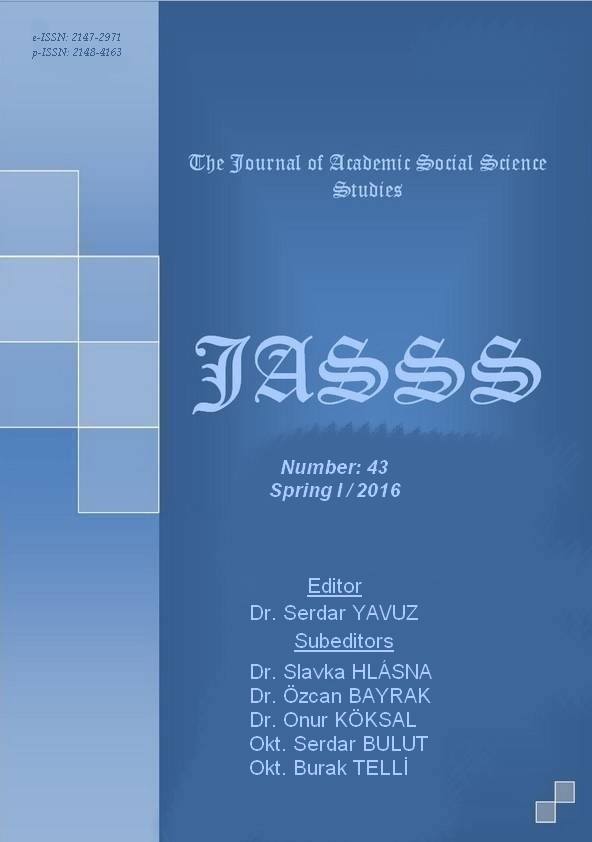18. YÜZYIL BATI FELSEFESİYLE YARATILAN ORYANTALİST TÜRK(İYE) İMAJI VE SİNEMAYA YANSIMALARI: IMDB ÜZERİNDE BİR ANALİZ
Author :
Abstract
Bin Bir Gece Masalları gibi edebi eserlerle gerçekleştirilen oryantalizm serüveni, günümüzün hakim kitle iletişim araçları olan televizyon ve sinema üzerinde de tüm hızıyla devam etmektedir. Özellikle 1930’dan sonra, sinemanın liberalleşmesiyle birlikte, filmlerin yalnızca ürün değil, kitlesel üretim yapan uluslararası yatırımlara dönüşmesi oryantalizmin geniş sahalara yayılmasını sağlamıştır. Çağımızın en önemli ve etkili görsel sanatı olan sinema, sadece ait olduğu toplumu ya da onun kültürel değerlerini yansıtmakla kalmaz, aynı zamanda filmi üreten toplumun, şirketin ya da kurumun öteki toplumları nereye yerleştirdiğine, onlara ait değer yargılarını ne şekilde konumlandırdığına da aynalık yapar. Bu temsil ve sunum aracıyla, toplumlar, uluslar ya da değer yargıları yüceltilebileceği gibi değersizleştirilebilmektedir. Bu çalışma, 18. yüzyıl oryantalist felsefecilerin, Batıdaki Türk(iye) imajının temellerini attığı ve günümüzdeki Türk(iye) imajının bu temelin etkilerinden oluştuğu varsayımına dayanmaktadır. Bu amaçla çalışmanın literatür taramasında, Batı perspektifli aydınlanma zemininde, 18. yüzyıl oryantalist felsefecilerin Türk imgesini nasıl inşa ettiği, Batılı gözüyle Türk’ün dönem ve koşullar içinde nasıl görüldüğünü, Türk imgesine ait bilginin nasıl oluşturulduğu tespit edilmiştir. Çalışmanın analiz bölümünde ise, Batı’nın Doğu’ya bakışında geçmiş ile bugün arasındaki bağı kurmak adına, Uluslararası Film Veritabanı Sitesi olan IMDB‘de en beğenilen 1000 (Top 1000) film içinde “Türk” söylemi açıkça dile getirilmiş sinema filmleri analiz edilmiştir. Çalışmanın sonuç bölümünde ise; analiz edilen filmler ve ortaya koyulan göstergeler ışığında, yaratılan “Türk(iye)” imajı iletişim ve halkla ilişkiler penceresinden yorumlanmaya çalışılmıştır.
Keywords
Abstract
Orientalism adventure taking place with such literary works as 1001 Arabian Nights still continues on television and cinema which are the dominant mass media of today. Especially after 1930, through the liberalization of cinema, orientalism could spread to wide areas when the films are turned into not only products but also international investments which carry out mass production. Cinema, being the most important and efficient visual art of our era, not only reflects its society or its cultural values but also acts as a mirror reflecting the position where the society, company or institution, which produces the films, puts the other societies and how they position their value judgements. Through this representation and presentation, societies, nations or value judgements can be glorified or trivialized. This study is based on the assumption that 18th century philosophers have laid the foundation of the image of Turk(ey) in the West and the current image of Turk(ey) is composed of the effects of this foundation. In this regard, in literature review of the study, it was determined how 18th century orientalist philosophers have built the image of Turk, how they have seen Turkey under the relevant era and circumstances from Western point of view and how they have created the knowledge about the image of Turk on the base of enlightenment with Western perspective. In the analysis part of the study; cinema films which are chosen among IMDB (International Movie Database) Top 1000 films and in which the discourse of “Turk” is explicitly expressed have been analyzed in order to establish a link between the history and today in the perspective of the West towards the East. In the conclusion part of the study, under the light of films which are analyzed and their indications, the image of “Turk(ey)” has been tried to be interpreted from the framework of communication and public relations.





